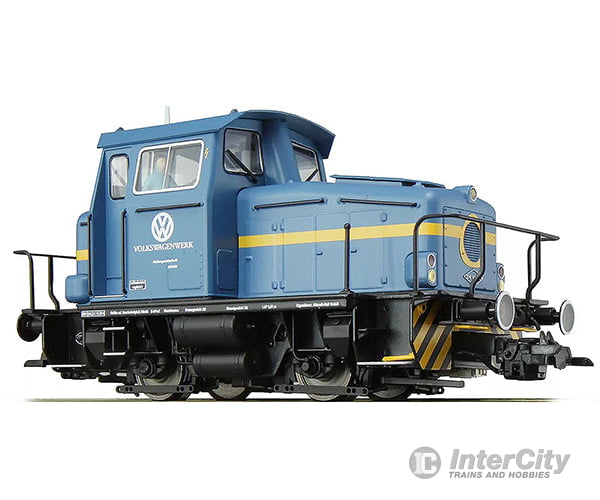Description
- Metal frames and stems
- Openwork fan grille on the front of the long stem
- Finely detailed, multi-colored driver's cab
- Numerous details attached separately to the chassis
- Separately attached and partially perforated steps
- Free-standing handlebars
- Spring buffer
- Inserted train driver figure
- Height-adjustable digital shunting coupling for all bracket couplings
- Bell armature motor with flywheel
- Drive on both axles, one traction tire
- LokSound 5 micro decoder for DCC, Motorola®, M4 and Selectrix® operation
- Independent registration at control centers with RailComPlus® functionality
- PowerPack storage capacitor for uninterruptible power supply
- Speakers with a large sound capsule for maximum sound enjoyment
- Universal electronics with plug-in grinder and slide switch for switching between two-wire and center-wire operation
- Smoke generator synchronous with the locomotive sound
- Digitized original sounds of a KG230 B with a 12-cylinder Deutz engine A12 L 714
- Light changes depending on the direction of travel, headlights on the train side can be switched off, shunting, driver's cab and driver's desk lighting
- Brake sparks when braking sharply
- Chassis lighting
- Pipette for filling the smoke generator is included
- Two different antennas are included
- Length over buffer = 92.3 mm
In the performance class of a Köf III, Deutz offered the two-axle diesel-hydraulic KG 230 B from 1962. KG stands for small locomotive with cardan shaft drive, 230 for the horsepower and B for the axle arrangement. The in-house air-cooled twelve-cylinder engine A12L714 produced 230 hp at 2000 rpm. The seven KG 230s built for explosion-sensitive plants had a water-cooled six-cylinder diesel engine. The transmissions of most locomotives were set to a maximum speed of between 20 and 30 km/h to improve tractive power. Depending on the track position, the purchasers had additional metal placed in the frame area so that locomotives weighing 26 to 36 t could be ordered. The two Bayernhafen AG locomotives and the BEHALA locomotives even had multiple control devices. Despite their advanced age, many of the two-axle vehicles still in use today still have their original engines. Since most companies only had a few locomotives, they were kept in good technical condition because they couldn't be done without. The few employees trained on the locomotives knew exactly the limits of their locomotives over the years; the simple and robust truck technology could often be kept running using the factory's on-board resources. Deutz delivered a total of 64 KG 230 Bs and Henschel delivered three more, primarily to German owners, but also to France, Italy, Luxembourg and the Netherlands. The German Federal Postal Service procured one example, and there were other locomotives in government service from the Italian State Railways FS and the Spanish RENFE. The list of owners reads like a who's who of major European industry: BASF, RAG, Wintershall, BP, DEA, Shell, VTG, Arbed, Thyssen, Mannesmann, Feldmühle AG, Krupp Stahl, Rheinpreußen, Rhenus, RWE , Ford, MAN, Volkswagen, Kali + Salz, Portland Cement, Holcim Cement, Südzucker AG. The stability and tractive power of the air-cooled two-axle vehicles were also relied upon for port logistics in Aschaffenburg, Berlin, Braunschweig, Bremerhaven, Ginsheim-Gustavsburg, Hanover, Regensburg and at Luxport in Wasserbillig. The great quality of the construction is reflected in the fact that the locomotives are not scrapped when there is no need for them, but are sold on. In elegant red paint, a locomotive at club 241-A-65 carefully moves valuable museum vehicles.


